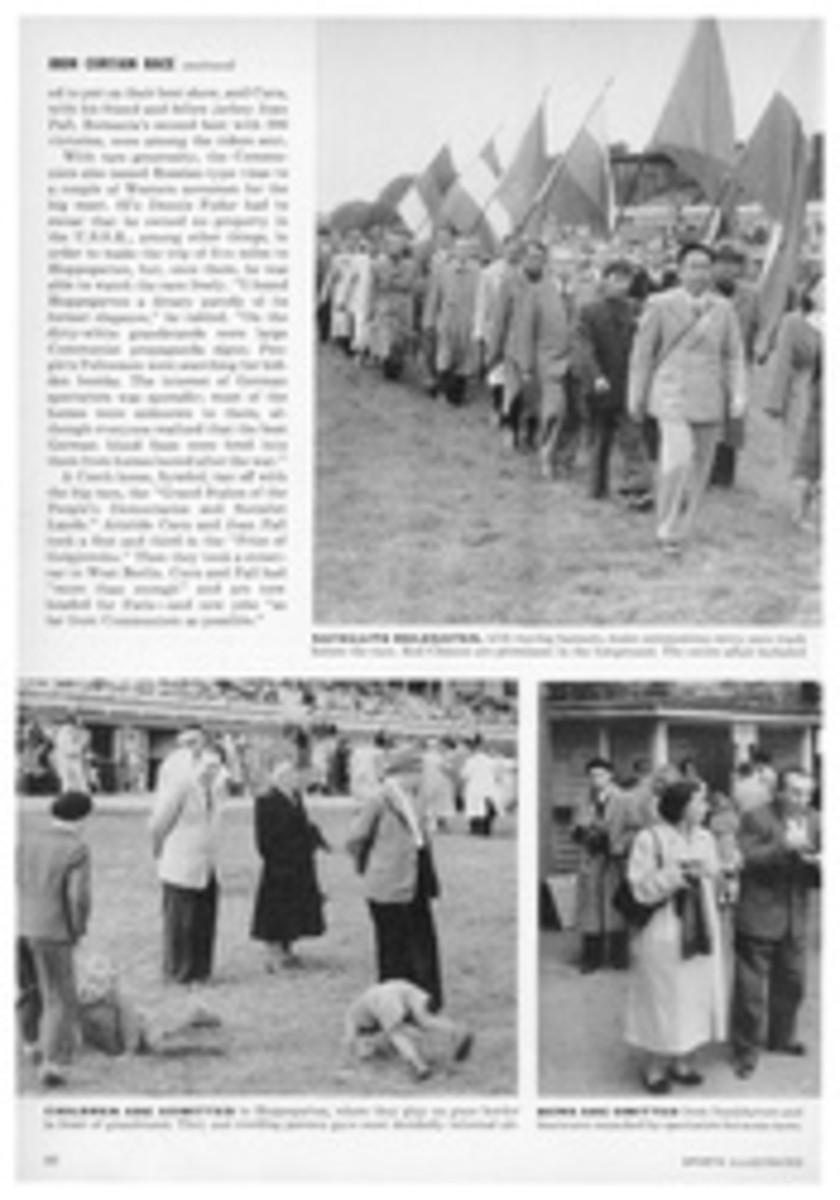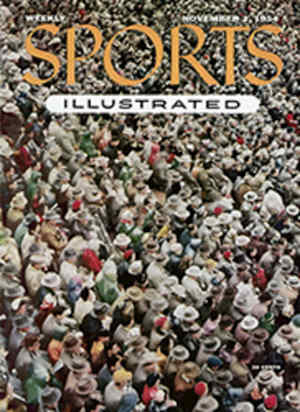
TRAPPING IS STILL WHAT IT USED TO BE
A very odd fact about the cold-weather sport of trapping the muskrat and other furry animals is that since the days of Daniel Boone, the original Babe Ruth of the business, it has remained almost unchanged. The sport of trapping has, in fact, scarcely changed for at least a thousand years—with one single exception. Somebody, and nobody knows exactly who it was, came up with the steel trap. Otherwise the trapping world has stood still—except, of course, that things like seasons and licenses have been invented and must be observed.
The reason is that good trapping is mostly a matter of outthinking the animals born with fur coats, none of whom have ever been caught carrying Phi Beta Kappa keys. It's a very cheap, very easy business to enter. It costs a young trapper anywhere from 35¢ to a couple of bucks for a trap, that's all. The muskrat is the bread-and-butter prize. The mink is pretty special.
Beginners at trapping frequently pick up $50 to $100 in a matter of a few weeks preceding Christmas, if they're lucky enough to live near marshlands where dining on grass is the big attraction to the trapper's quarry. The tough part is that you have to get up early in the morning. Also you should check the traps again right after school lets out.
SEVEN MILLION MUSKRAT
If you decide to go in for muskrat trapping, you won't get paid much more than two dollars per, even in a year when the market price is healthy. But this year, somewhere upward of seven million muskrat will be de-furred if things go along as usual. Anyone who wants to will be able to collect some of the vast loot paid for them and other small animals born with natural fur coats.
The first thing to do is find a marsh or a stream—places where the muskrat ramble. You can easily check to find out where muskrat have burrowed in—den holes in the bank, partially under water, tell the story. Check farther and see which holes have been burrowed into lately. In this case, "lately" is a very important word.
Now you set your trap on the inside of the hole. Make sure it's placed solidly and is below the water level. Also make sure there's enough room for the muskrat to paddle his way right into it.
Then stake the chain, attached to the trap, as far away as you can. When the muskrat makes his final mistake, he'll drown very quickly.
Going after mink is a different matter. There's a young mastermind of the mink in the Catskill Mountains of New York State named Asa William Sprague. Probably because his family has a 100-acre farm he picked up a lot of firsthand information about the mink. He learned quite soon in his trapping career that the mink is a sucker on the subject of curiosity. The mink has to explore everything and find out what's going on.
For this reason Asa builds a sort of tunnel of rocks in a stream. (He uses gloves when building it to leave no sign of human scent.) A day comes soon when the nosy mink has to find out what's going on in there. He goes through the tunnel, discovers nothing at all except that the place seems to be safe enough. Then, a few days later, when the mink is used to it as. a place to stop in for kicks, Asa sets a trap in this "cubby," as it's called by trappers. Next day he picks up his mink.
A SHORT FERRY RIDE
It isn't just the country folk who earn Christmas money at trapping. Staten Island, a short ferry ride from Manhattan, has fine trapping marshes. A guy named Bill Schultheis Jr. is now at St. Peter's College in Jersey City with the help of some of the money he made for years trapping mostly muskrat almost within sight of the Statue of Liberty.
The muskrat is far ahead in popularity in the commercial markets, according to the American Fur Merchants Association of New York. After him comes the raccoon, then opossum and in the clean-up slot of the batting order is the mink. Skunk and fox follow, but not too closely.
Anyone who wants to go into trapping, starting from scratch, will do himself no harm reading a book called simply, "Trapping." It was written by Harold McCracken and Harry Van Cleve, two genuine experts (publisher: A. S. Barnes & Co.).
Not that you can't go right out, set traps (always making sure about regulations) and get something. The chances are you can—but not very often. Animals can be much smarter than you think. And people, sometimes, dumber.
PHOTO
THE MUSKRAT: HARD TO SPOT BUT EASY TO CATCH
PHOTO
OUT OF CHARACTER
JUMPING JACK
He hurtled into headlines as a 25-foot broad jumper at U.C.L.A. But his greatest distinction came when he broke the color line in big-league baseball. Still helping the Brooklyn Dodgers with potent bat and skilled glove is: Jackie Robinson

